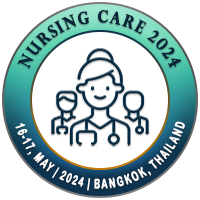
Dr. Tracey Long
Roseman University, USATitle: Sleep quality of Iranian nurses: A nationwide and cross-sectional study
Abstract
Background: The quality of sleep of nurses is an important variable related to giving quality patient care. This study evaluated the sleep quality of Iranian nurses.
Method: This cross-sectional study examined 920 nurses working in hospitals in 7 cities of Iran. A random multi-stage sampling method was used. The instruments used were the Demographic Information Questionnaire and Pittsburgh Sleep Quality Index. SPSS version 24 was used to analyze the statistical data.
Findings: The overall sleep quality score of the nurses revealed 71.73% of participants had poor sleep quality. The most common problems of the nurses were in two categories: sleep disturbance and sleep efficiency. Sleep quality was positively correlated with education level and negatively correlated with having a second job. Other occupational and demographic variables had no statistically significant relationship with sleep quality. Shift work and work in two hospitals were factors predicting a lower quality of nurses' sleep. Conclusion: The study showed that poor sleep quality is still a significant health issue for Iranian nurses.
Implications for Nursing Management: Recommendations for consideration include (a) reducing the nurses' daily work hours in Iran, (b) reducing nurses' work shifts in a month, (c) hiring more nursing staff, (d) improving nurses' salaries so they don’t have to work a second job, and (e) teaching sleep quality improvement skills. Nurses need to prioritize their sleep schedule to get adequate sleep to be fully alert and function at their highest level while working in patient care settings.
Biography
Tracey Long has been a nurse for 36 years working in critical care, and now is an associate professor of nursing at Roseman University. She is also a Family Nurse Practitioner, working in endocrinology. She serves on the editorial board of two peer review journals, has published over 35 articles, and has been cited in publications over 100 times.

